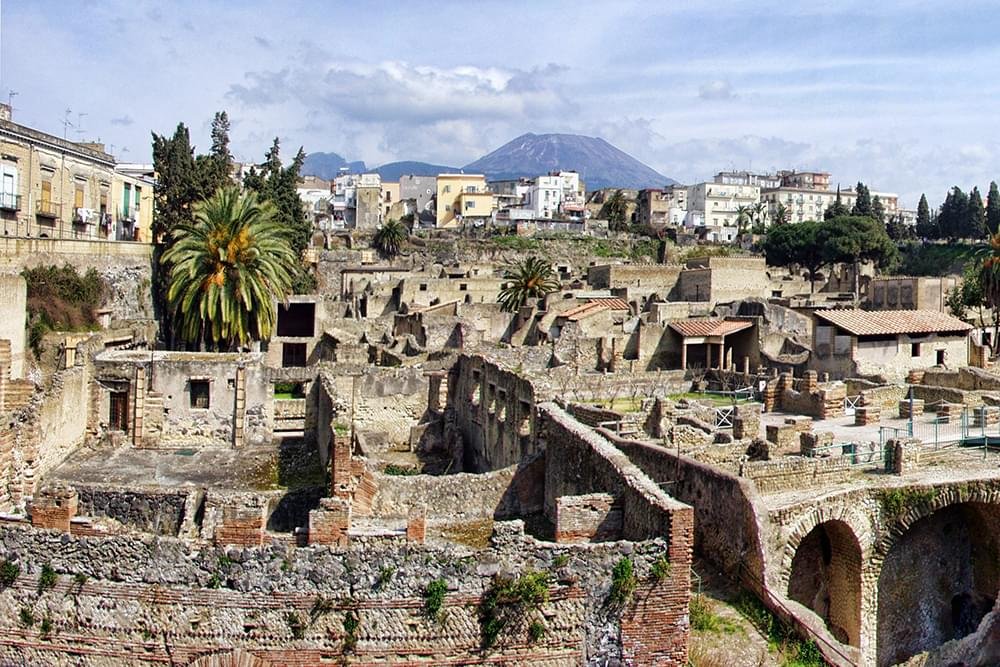
Nestled in the shadow of Mount Vesuvius, Herculaneum remains one of the most fascinating archaeological sites in Italy, offering a unique glimpse into the daily life and tragic end of a Roman city. Unlike its more famous neighbor, Pompeii, Herculaneum was buried under a far denser and hotter pyroclastic material during the catastrophic eruption in 79 AD. This led to better preservation of organic materials, such as wood, food, and even fabrics, which provides us with an incomparable window into the ancient world.
The story of Herculaneum's modern discovery begins in the early 18th century, although the site had been occasionally plundered by tunneling thieves for centuries. Official excavations started under the auspices of the King of Naples in 1738, predating the work in Pompeii by about a decade. Early excavation techniques were primitive and often destructive; it wasn't until the 20th century that more systematic and scientifically informed methods were employed.
The excavation of Herculaneum has been a complex process due to the deep volcanic material that covers the site, which solidified into a hard rock-like layer. This has preserved upper levels of buildings and delicate structures that are not seen in Pompeii, but it also makes the excavation efforts much more challenging and time-consuming.
The remains of Herculaneum provide a snapshot of Roman life in the 1st century AD. The city was smaller than Pompeii but wealthier, which is reflected in the high quality of the homes and public buildings. Many of the houses in Herculaneum boasted intricate mosaics, fine wall paintings, and a complex water system.
One of the most notable residences is the House of the Mosaic Atrium, which showcases a large, beautifully detailed mosaic floor and sophisticated wall paintings. Public baths, complete with heated floors and walls, also speak to the community's affluence.
The social structure of Herculaneum can be glimpsed through the artifacts that have been recovered. Items such as household utensils, jewelry, and even carbonized food give us insight into the daily activities and social practices of its residents. These finds suggest a community that enjoyed a comfortable lifestyle with a taste for luxury and beauty.
The eruption of Mount Vesuvius in 79 AD was a monumental event that buried Herculaneum under approximately 20 meters (65 feet) of volcanic material. The rapid burial helped preserve the town, but it also sealed the fate of its inhabitants. Unlike Pompeii, where many residents were killed by falling buildings or ash suffocation, most of Herculaneum's citizens perished due to the intense heat of the pyroclastic flows.
Excavations have uncovered skeletal remains in the boat chambers at the ancient shoreline, where people apparently sought refuge, hoping to escape by sea. This grim discovery provides a poignant reminder of the disaster's human cost.
Archaeologists have unearthed a wealth of artifacts in Herculaneum that have significantly contributed to our understanding of Roman technologies, arts, and daily life. Notably, the discovery of the Herculaneum papyri (carbonized scrolls) in the Villa of the Papyri has opened a new window into ancient literature and philosophy. These scrolls are still being deciphered and hold the potential to reshape our knowledge of the ancient world.
Furthermore, the preservation of organic materials has allowed researchers to conduct detailed analyses of the diet and health of the ancient Romans. Studies of preserved food have revealed a varied diet that included fruits, nuts, cheese, and fish, providing insight into the agricultural practices and trade networks of the time.
Today, Herculaneum is a UNESCO World Heritage site and a popular tourist destination. Efforts to preserve the site are ongoing, with new technologies being employed to protect the ruins from environmental and human-induced threats. Tourists visiting Herculaneum can walk the ancient streets almost as if they were Roman citizens themselves, peering into shops and homes, and standing in the very spaces where Herculaneum's residents lived their daily lives until Vesuvius's catastrophic eruption changed everything in an instant.
Herculaneum offers a unique perspective on the Roman world, its preservation providing a more intimate and detailed view than nearly any other archaeological site of its kind. As excavations continue and technologies evolve, the ancient city is sure to reveal even more about the Roman world. For historians, archaeologists, and visitors alike, Herculaneum remains a poignant testament to the fragility of human life and the enduring quest to understand our past.

More Details